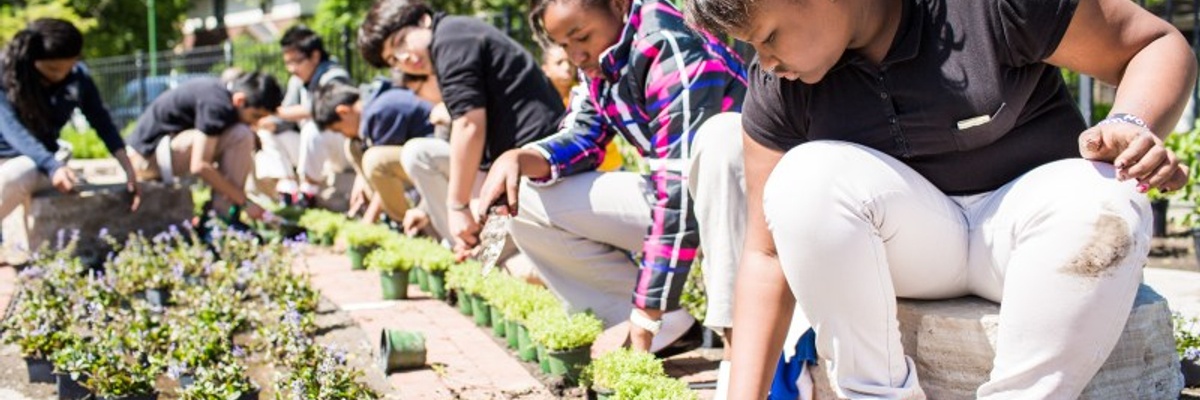The Idea
Since 2007 Openlands have supported 58 Chicago Public Schools to start and maintain school gardens, directly impacting 33,000 students each day in addition to the hundreds of teachers, parents, and community members. School gardens are incredible learning tools that allow students with limited access to nature to have that exposure. If your school has a garden that was previously approved by Chicago Public Schools but has since been decommissioned or it could do with some improvement, this guide and fund will help you and your Garden Team to develop a successful, sustainable school garden, including; developing a Garden Tracker which should be a “go to” manual that houses everything there is to know about your garden; a student installation day and creating a maintenance stewardship plan.
Why it's important
More people live in cities today than ever before. Right now, 80% of the United States population is found in metropolitan areas. That leaves a small amount of space available where a large number of people can connect with nature – at their neighborhood parks and forest preserves. These places are not always in walking distance or visited on a daily basis. But, for school-aged children, school grounds are. Why not use school grounds to develop a sense of place, a connection to the environment for urban dwellers? Openlands views school gardens as vital to help connect children with the outdoors. One of our main organizational visions is to educate tomorrow’s stewards. Current research tells us that children who experience nature from their earliest years through fifth grade are much more likely to adopt sustainable lifestyles and ethics as adult decision makers. If youth live in areas with little or no available or safe open space, they won’t be motivated to create, protect and preserve that open space in the future. School gardens are a guided, safe way to connect with the outdoors and all of its benefits. School gardens, as a main component of urban environmental education, can connect to any subject area – not as another mandate but as a replacement to indoor or lab-based activities. Be they native or edible gardens – each of these has the ability to teach us about our cultural and historical past or to encourage healthy eating habits by growing our own radish. It’s time for school gardens.

